
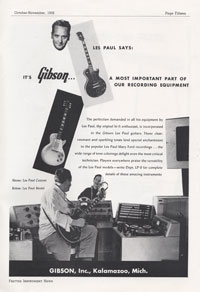
The Gibson Les Paul Custom was launched in 1954 as the Fretless Wonder or Black Beauty, as a companion model to the Les Paul Model of 1952. This was an ebony finished (as the name would suggest) guitar with contrasting gold hardware, a black single-coil P-90 (the same pickup as the Les Paul Standard) in the neck position, and a distinctive pickup in the bridge position, referred to as the Alnico V - named after the magnet within. These black soapbar style Les Paul pickups were quite distinctive. The advert (right) from 1956 shows Les Paul at work recording guitar with his wife Mary Ford looking on. The advert shows the original gold-topped Les Paul Model, but also the newer black-finished Les Paul Custom.
The Gibson Les Paul was always a fine guitar, but the Custom especially so, with it's gold plated hardware, bound body, neck and headstock, and mother-of-pearl inlays. Although the pickup covers themselves were simple black plastic, the polepieces were plated with gold. The Gibson Les Paul Custom headstock inlays used the same 'split-diamond' design as the Super 400. The large block neck marker inlays start at the first fret.
The Les Paul Custom guitar was described in the 1955 Gibson catalogue as follows:
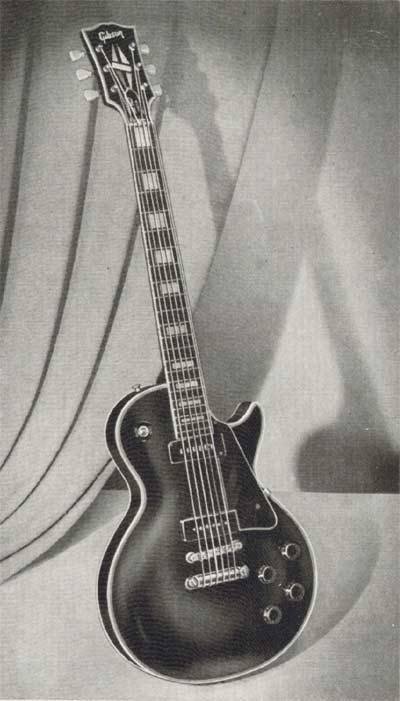
Here is the ultimate in a solid body Gibson Electric Spanish Guitar... players rave about its extremely low smooth frets and playing action, call it the "Fretless Wonder." Features clear, resonant and sparkling tone, with widest range of tone colorings.
Solid Honduras Mahogany body with carved top, size 17 1/4" long, 12 3/4" wide, 1 3/4" thick with graceful cutaway design; bound with alternating white and black strips on top and bottom of body. Mahogany neck, with exclusive Gibson Truss Rod neck construction; ebony fingerboard; deluxe pearl inlays.
Two powerful magnetic type pickups specially designed and engineered for this model; individually adjustable gold colored magnets, gold plated polepieces. Double combination Bridge and Tailpiece is another Gibson First... adjustable both horizontally and vertically, plus the Gibson gold-plated Tune-O-Matic bridge, adjustable up and down, and individually for each string length. This combination provides a new high in sustaining tone quality and precision pitch adjustment.
Three way toggle switch selects either front or back pickup, or both simultaneously; each pickup has separate tone and volume controls; finest individual gold-plated Kluson machine heads; gold plated metal end pin and strap holder. Finished in solid Ebony color for rich contrast with gold plated fittings. Padded leather strap included.
Les Paul Custom Guitar Case: 537 Faultless
The Les Paul Custom had a launch price of $325, compared to $225 of the Les Paul Model (Standard) and $99.50 for the Les Paul Junior (US zone 1, September 1954). This was naturally the most expensive Gibson solid body, but in fact expensive, even compared to some Gibson archtops. In the same price list, the ES-175D is listed at $265, the ES-295 at $280. The next most expensive guitar was the ES-350 at $385.
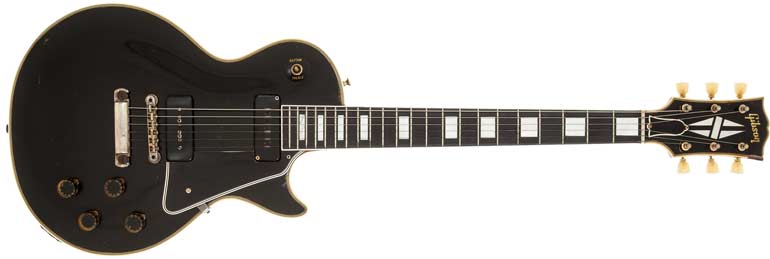
1954 Gibson Les Paul Custom, with black single coil pickups Image Heritage auctions
By very late 1957 this pickup configuration was changing to three humbuckers. It certainly is an impressive looking guitar. Have a look at the Les Paul Custom in the 1958 'guitars and amplifiers' catalogue. This was printed in March 1958, and lists the Custom at $375. Interestingly, despite the extra pickup, and the extra gold pickup covers, there was no price increase on the two-pickup version listed in the previous price list (July 1957).
Sales of the Les Paul Custom had dropped in 1957, and despite the new pickup arrangement, sales actually continued to decrease through 1958 and 1959.

1958 Gibson Les Paul Custom, with three gold humbucking pickups Image Heritage auctions
Shipping figures for the first issue Les Paul Custom are shown below (see Gibson Shipment Totals 1937-79 by Larry Meiners). A total of 1912 of these Black Beauty Les Pauls were shipped from Gibson's Kalamazoo plant up until 1960, with 1956 being the peak year. As can be seen, sales dropped off afetr the model was upgraded to three pickups. Whether this was coincidental, or directly related to the new pickup configuration is hard to say, but in any case, sales were bad enough for the Les Paul to be deleted from the Gibson line in 1960.
| 1954 | 1955 | 1956 | 1957 | 1958 | 1959 | 1960 | total | |
| Les Paul Custom first issue |
94 | 355 | 489 | 283 | 256 | 246 | 189 | 1912 |
In actual fact, the Les Paul name was too good to just drop, and in 1961 a new range of guitars was created with the 'Les Paul' moniker. These were, of course, the new SG series, but this name was soon dropped, in favour of 'SG', or 'solid guitar'.
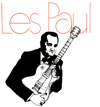
Throughout the second half of the 1960s, a number of high profile guitarists were playing older Les Pauls, and producing fantastic sounds. Jeff Beck, Keith Richards, Michael Bloomfield, Peter Green and Eric Clapton all created some of the most distinctive music of the time with these guitars. Les Pauls were everywhere. Except in guitar stores... So in 1968 Gibson decided to reissue two Les Paul models, and the Custom was made available in its original ebony finish, and again dubbed the fretless wonder. It was available from mid 1968 at a price of $545 (Gibson price list 01/06/68), with the Les Paul Standard at $395. The brochure (right) describes the two models (click for a closer look at this brochure).
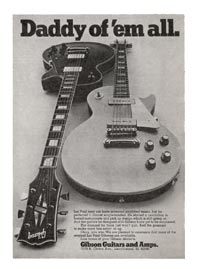
Gibson is proud to announce its newly reborn affiliation with the man who has come to be known to millions of music lovers the world over as "Mr. Guitar"...
And in the words of the 1969 "Daddy of 'em All" advertisement...
Les Paul may not have invented amplified music, but he perfected it almost single-handed. He started a revolution in fretted instruments and pickup design which is still going on. And the guitars he designed with Gibson have yet to be surpassed. The demand for them just won't quit. And the pressure to make more has never let up. Okay, you win. We are pleased to announce that more of the original Les Paul Gibsons are available.
The Custom was not an exact replica, as it had two humbuckers, (originally it had two single coils OR three humbuckers). The 1968 LP bodies and necks Les Pauls were one-piece mahogany (with maple top). Some time in 1969, the bodies were changed to three-piece mahogany/maple/mahogany, with a three-piece mahogany neck.
1969 was a great year for the Les Paul Custom, in terms of sales: 2353 guitars shipped, which was more (just) than the total number shipped between 1954-1960 and 1968 combined.
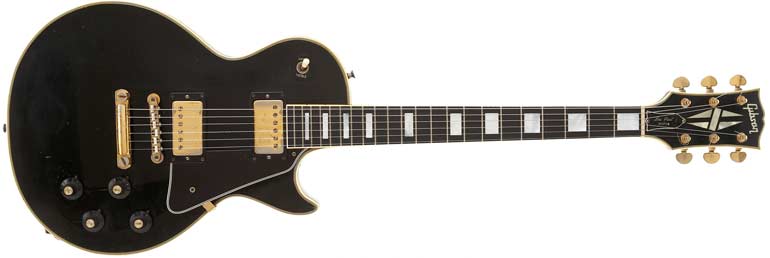
1968 Gibson Les Paul Custom, with two gold humbuckers Image Heritage auctions
In late 1969, Norlin took over from CMI, and the company's focus changed somewhat. Advertising and promotion was shifting away from older jazz, country and pop musicians, and towards a younger rock crowd. Sales increased year on year, reaching a peak in 1973 of 8344 guitars shipped.
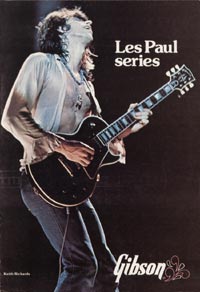
Cherry Sunburst was first listed in price lists as an option in mid 1971 (Gibson price list 26/06/71) - have a look (and listen to sound clips) to a 1973 Cherry Sunburst LP Custom. According to shipping figures, Cherry was also available at this time (though never mentioned in any Gibson price lists or catalogues). Tobacco was available from 1972 (Again never listed). In this period, two humbuckers was the norm, but three pickup models were available as a special order option (along with a short scale model).
Sales were strong throughout the early 1970s, despite the deep US recession of 1973, and 1975 saw a further two finish options; white and wine red, with tobacco sunburst and natural being added in 1976. Sales did dip somewhat in 1976 and 1977, but remained in the thousands.
By the mid-1970s, Gibson had opened a new plant in Nashville, and a significant amount of Les Paul production was moved from Kalamazoo to the new facility. Gibson serial numbers prior to 1977 give no indication as to where an instrument was produced, but from '77 they do. The majority of these late seventies Les Paul Customs seem to have been built at Nashville, though Kalamazoo-made examples certainly exist.
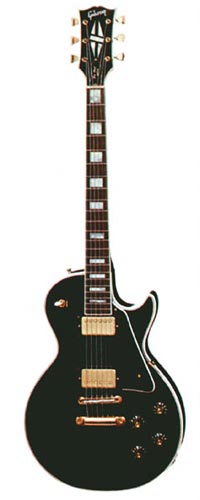
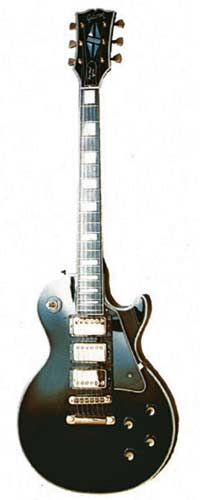
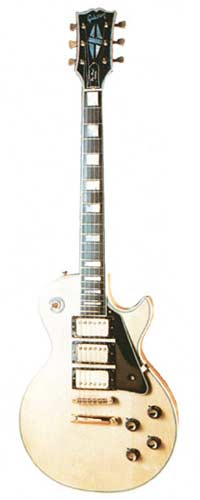
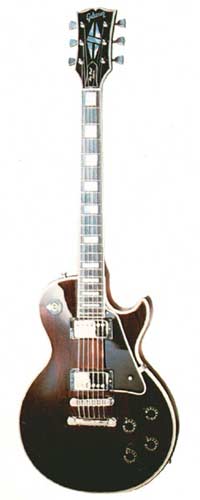
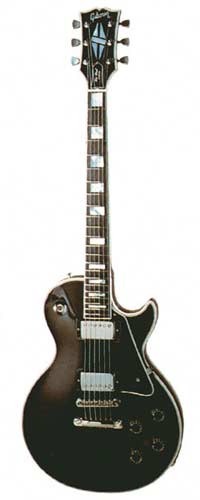
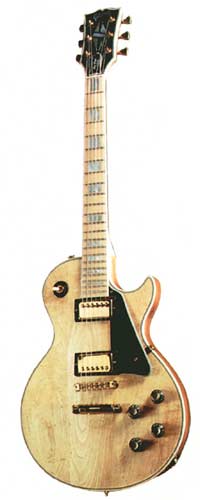
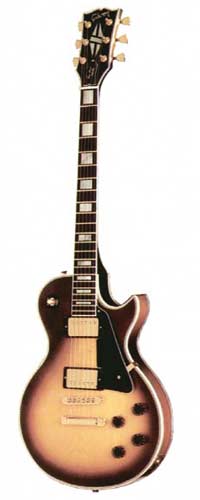
Shipping figures for the second issue Les Paul Custom (see Gibson Shipment Totals 1937-79 by Larry Meiners)
| 1968 | 1969 | 1970 | 1971 | 1972 | 1973 | 1974 | 1975 | 1976 | 1977 | 1978 | 1979 | |
| Les paul Custom second issue |
433 | 2353 | 2612 | 3201 | 4062 | 8322 | 7563 | 7451 | 4323 | 3134 | 10850 | 1699 |
From 1976, three humbuckers were no longer a special order option; but the standard configuration. Two pickup customs were available with nickel plated hardware, which obviously made them a cheaper guitar than the gold plated models. One of the final finish options was the Les Paul Custom Silverburst - a nice black to silver burst finish, first mentioned in price lists in May 1978 - although only for the Les Paul Custom variant with nickel plated hardware.
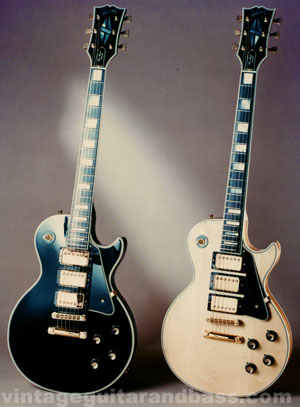
1978 was a fantastic year for the Les Paul Custom. Sales exceeded 10000 units (the previous highest year was 1973 with 8300). As well as the two and three pickup customs, the 1978 Gibson catalogue also shows a 2 pickup version with a maple fingerboard. Still with gold hardware, it was available in ebony and natural finishes.
The Les Paul Custom is very much a flagship model of Gibson's current line, and has not been out of production for any length of time for the last five decades. Naturally it is a very expensive instrument; an Epiphone Les Paul Custom has also been available from time to time, with similar features (typically dual pickup); currently available as the the Epiphone Les Paul Custom Pro (check prices).
$31900
$8995
$4895
$98000
$7500
$5939
$7495
$13999
$17995
$6350
$8500
$3995
$12495
$5995
$6495
$7000
$7199
$4495
$9719
$3900